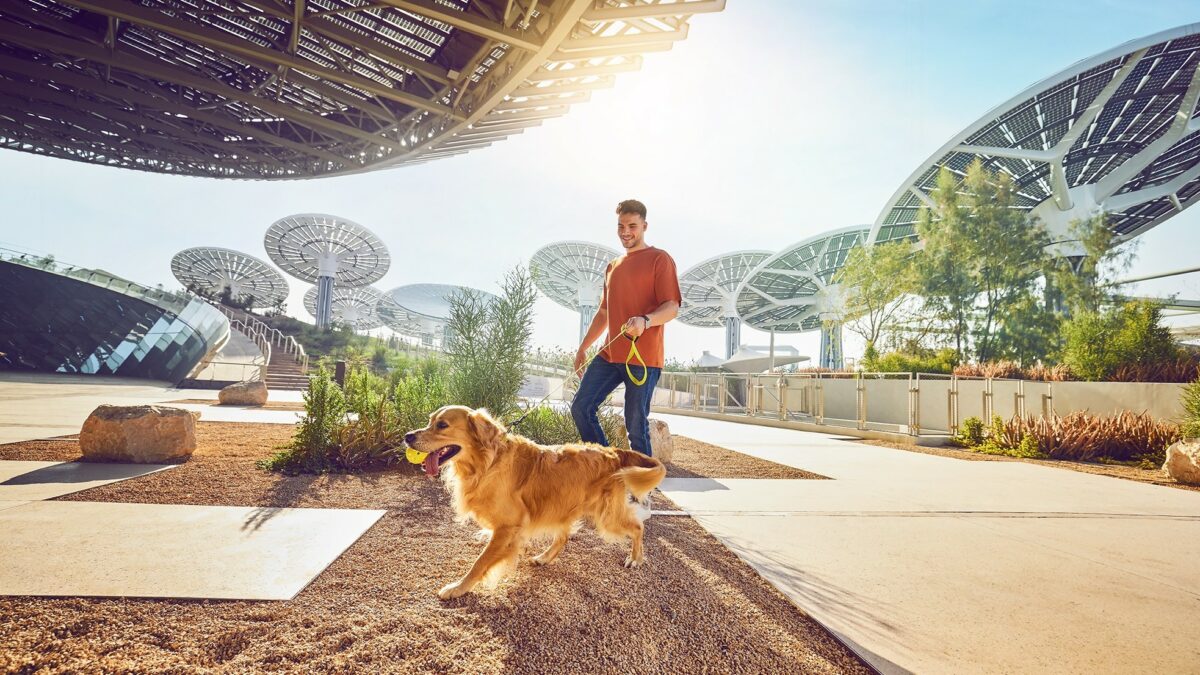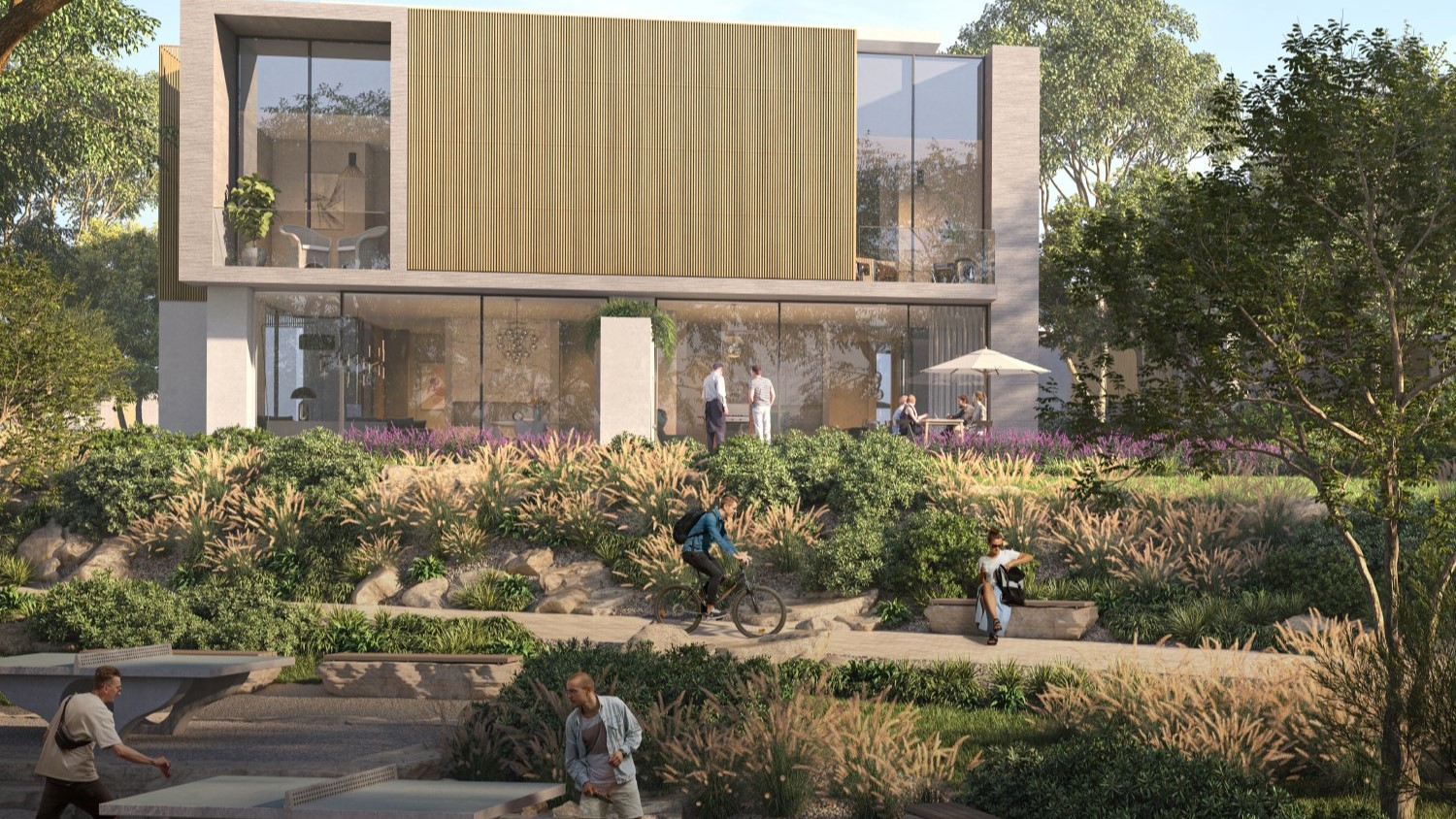DUBAI, UAE — Adaptive reuse has been gaining traction worldwide for the last several years, and it’s high time the Middle East followed suit. With Expo City Dubai, we’re witnessing one of the most significant adaptive reuse projects, showcasing the potential for sustainable development in the region.
In the context of the built environment, adaptive reuse involves transforming an underused building or site into a setting that’s more functional and practical. Repurposing old structures offers developers a unique opportunity to re-engage with urban spaces that were once liabilities, while also preserving their architectural heritage.
Cities like New York and London have led this trend, with some notable landmarks undergoing successful transformations. For instance, One Wall Street, an Art Deco skyscraper in New York, has been converted from offices to residential use. In London, No. 1 Grosvenor Square, once the U.S. embassy from 1938 to 1960, has been turned into a super-prime residential building. The iconic decommissioned Battersea Power Station has been redeveloped into a mixed-use development with residential, commercial, and leisure facilities.
Predictions estimate that by the end of the next decade, about 90 percent of all newly constructed buildings globally will be adaptively reused, and this trend is growing at an unprecedented rate.
But what makes adaptive reuse such a significant and game-changing trend?
Fundamentally, Expo City Dubai is not the city’s first foray into adaptive reuse. The UAE government has already showcased the benefits of repurposing old buildings by developing new spaces that meet the evolving needs of the community. The Bastakiya neighborhood and Al Serkal Avenue in Al Quoz are prime examples of how this trend can revitalize forgotten areas into thriving cultural districts. The Bastakiya neighborhood now features cafes, art galleries, and boutique hotels while retaining its traditional wind-tower homes, which preserve its historical significance while fostering a sense of culture and community. Similarly, Al Serkal Avenue, once an industrial area, has been transformed into galleries, studios, and performance spaces, becoming a hub for the city’s arts community.
Today, these projects have become the city’s trendiest cultural hotspots, demonstrating how repurposing unused spaces into functional areas helps preserve the neighborhoods’ historical significance while fostering a sense of culture and community among residents and visitors. By transforming old buildings and sites into practical settings, they can provide affordable housing, community centers, and cultural spaces that benefit the community while preserving the environment.
Moreover, sustainability has become increasingly important to people. The opportunity to live in a building that wasn’t demolished and rebuilt, avoiding the generation of large amounts of waste and carbon emissions, is a critical consideration for prospective buyers.
With governments emphasizing environmentally conscious living among businesses and residents, developers must innovate to supply new developments. This is especially crucial as the United Nations Environment Programme states that the built environment accounts for a staggering 39 percent of gross annual carbon emissions worldwide. The UAE’s construction market reached $86.7 billion in 2022, signaling a pressing need for sustainable solutions.
Adaptive reuse is a viable approach to reduce these impacts and advance sustainability by decreasing the energy needed to create and transport construction materials. Reusing existing structures instead of building new ones reduces carbon emissions.

What the developers of Expo City Dubai have accomplished is an incredible example of how a built site can be transformed to deliver something new and cutting-edge while also advancing sustainability. The venue developed for World Expo 2020 has been completely reimagined to serve a different purpose. By preserving some original structures, such as the iconic dome and the UAE pavilion, the developers honor the area’s past while introducing a new residential neighborhood.
What sets Expo City Dubai apart is that it’s not just another residential development. The entire site has been transformed into a self-sustaining, 15-minute city complete with its own parks and green spaces, all designed to meet rigorous standards for sustainable living, achieving GOLD LEED certification. The development prioritizes eco-friendliness with green roofs and smart energy-saving appliances, providing residents with a sustainable and healthy lifestyle.
Yet, Dubai’s Expo City is just the beginning. We can expect to see a rise in adaptive reuse initiatives as more regional developers emphasize environmental stewardship. This year, the UAE declared it the ‘Year of Sustainability’ ahead of COP28, which should inspire local developers to prioritize sustainability in their upcoming projects.
As more people from around the globe choose to make the UAE their home, there will be a greater need for housing and entertainment destinations. I believe repurposing older spaces is a much more efficient and sustainable option than starting from scratch. These projects inject new life into old structures and allow developers to create unique and award-winning properties that stand out in a competitive market.
Furthermore, the demand for sustainable projects is rising in the region, and it’s clear that buyers are attracted to high-quality adaptive reuse projects, especially those in unique settings. This trend is likely to continue, which could be a lucrative factor for developers, particularly if the existing structure is suitable for reuse.
As the expert sales and marketing consultants for Expo City Dubai, we are proud to lead the way in sustainable development in the region. Our involvement with the project will allow us to gain valuable insights from potential buyers, understand their interests in such projects, and encourage other developers to adopt similar practices.
With sustainability as a top priority in the region, we are excited to see more developers consider repurposing properties and transforming existing structures into vibrant new spaces that benefit both the environment and the community. And with Expo City Dubai leading the way, we look forward to seeing where this trend will take us in the coming years.
Sean McCauley is the Chief Executive Officer and co-founder of the Dubai-based property consultancy Devmark.
The opinions expressed are those of the author and may not reflect the editorial policy or an official position held by TRENDS.








